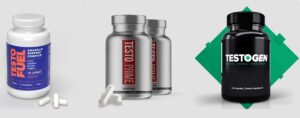It’s often assumed endurance running, like marathons, acutely spikes testosterone production. But what does science actually reveal about distance running’s effects on male hormonal health long-term? This article closely examines how running Volume and Intensity influence testosterone biosynthesis, clearance rates, and net exposure over time based on current sports medicine evidence.
Acute vs. Chronic Endocrine Effects
Like strength training, intense running causes short-lived testosterone surges, peaking 30-60 minutes post-exercise before returning to baseline within 24 hours. However, whether running chronically alters daily testosterone exposure long-term depends on the Accumulative training burden’s effects on testosterone metabolism kinetics.
Moderate Running Effects
In moderation, running provides several metabolic benefits that support healthy testosterone indirectly:
Weight loss – Shedding excess adiposity reduces aromatase enzyme activity thereby lowering estradiol while raising total and free testosterone.
Insulin optimization – By sensitizing cells to insulin, running helps stabilize blood glucose and minimize inflammation – both factors that can impair testicular testosterone production over time if unchecked.
For these reasons, moderate running is often encouraged for hormonal balance. However excessive volumes reach tipping points detrimentally affecting male endocrine health.
High Mileage Effects
When running volume exceeds ~15-20 miles per week, testosterone begins declining as the physical demands overburden the hypothalamic-pituitary-testicular axis, eventually suppressing testosterone biosynthesis.
For example, this study found 100+ mile training weeks decreased testosterone 20-30% in competitive runners. Levels remained depressed until running volumes lowered, allowing full hormonal recovery.
This dose-response matches other analyses showing testosterone drops accelerating once weekly volumes exceed peak physiological limits. Through interconnected signals, the body downregulates metabolic processes like tissue biosynthesis to cope, depressing testosterone.
Sprint Interval Effects
However, running doesn’t have to harm testosterone levels even at higher volumes provided training emphasizes brief, explosive bursts over sustained endurance.
By integrating high-intensity sprints, the mechanical strain remodels musculoskeletal tissues through anabolic signaling cascades that heighten, not hinder, androgen activity.
This study exemplified 30-second Wingate sprints preserving testosterone levels even with additional endurance training.
In summary, intensity matters greatly. While excessive running volumes suppress testosterone, brief explosive sprints added to training helps counterbalance catabolic signaling.
Conclusion
In conclusion, running provides no testosterone boosting properties itself beyond acute spikes. Moderate volumes may sustain healthier testosterone levels through metabolic enhancements lowering inflammation and body fat levels. However, excessive mileage beyond 15-20 miles per week eventually hinders testosterone production through unrelenting demands on the endocrine system. Integrating brief but intense anaerobic sprints helps mitigate this issue by promoting anabolic signaling mechanisms.



